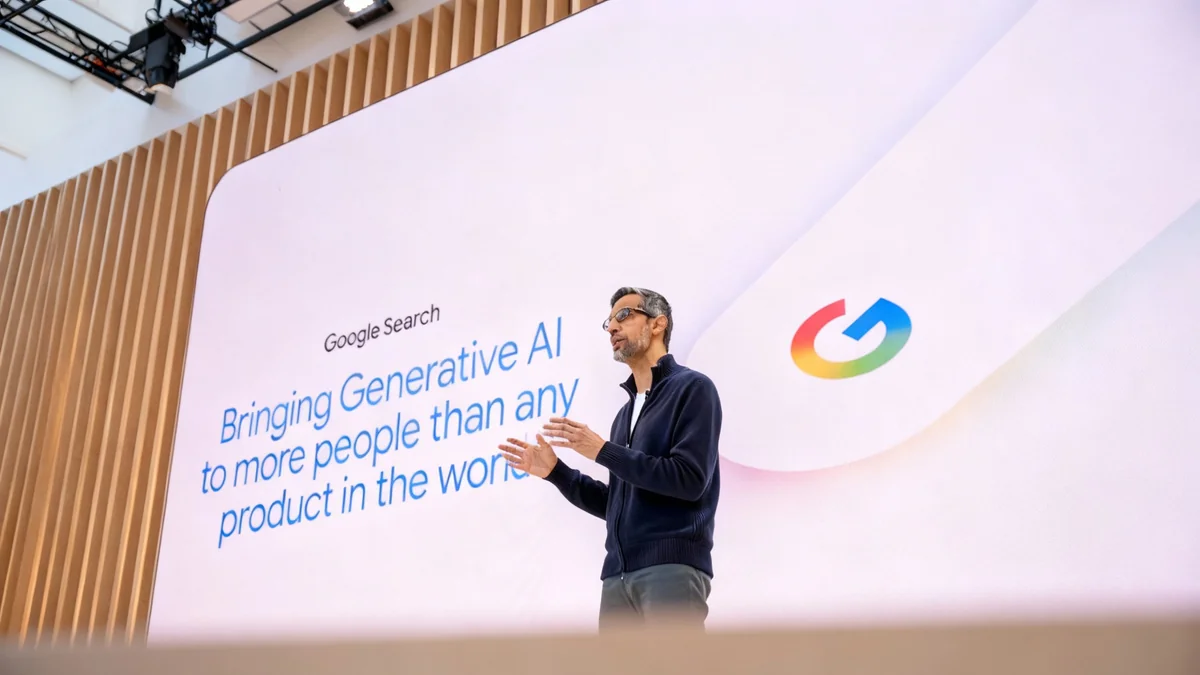New data from major technology companies reveals the rapid integration of artificial intelligence into daily life, with billions of interactions showing a shift toward using AI for practical guidance, information seeking, and personal decision support. While workplace adoption faces challenges, personal use of tools like ChatGPT has surged, outpacing the early growth of the internet.
Key Takeaways
- Over 18 billion messages are sent to ChatGPT every week, with more than one in ten people having used the service.
- Practical guidance, including tutoring and advice, is the most common use for ChatGPT, accounting for 10% of all messages.
- Personal, non-work-related AI usage now constitutes over 70% of interactions on platforms like ChatGPT.
- A "shadow AI economy" is emerging, where employees use personal AI tools for work tasks without official company approval.
- Globally, AI adoption correlates with national GDP, with the UAE leading at 59% usage among its population.
The Scale of AI Integration
In just a few years, artificial intelligence has moved from a niche technology to a mainstream utility. OpenAI reports that its ChatGPT service now handles more than 18 billion messages every week. The rate of adoption has been remarkable, reaching more than 10% of the population in a timeframe the world wide web took over a decade to achieve.
This rapid growth is not limited to one platform. In a recent quarterly report, Google announced its AI-powered search overviews reach over 2 billion monthly users. Similarly, Meta's AI assistant, integrated across its apps, has surpassed 1 billion monthly users, according to CEO Mark Zuckerberg. Microsoft's Copilot system has also crossed the 100 million monthly active user milestone.
AI by the Numbers
- ChatGPT: 18 billion+ messages per week
- Google AI Overviews: 2 billion+ monthly users
- Meta AI Assistant: 1 billion+ monthly users
- Microsoft Copilot: 100 million+ monthly active users
How People Use AI Chatbots
Detailed usage reports from AI companies provide a clear picture of how these tools are being integrated into daily routines. Data released by OpenAI on ChatGPT usage shows a wide range of applications, moving far beyond simple queries.
Practical Guidance and Writing Dominate
The largest category of use is classified as practical guidance. Within this, tutoring and teaching-related queries make up a significant 10% of all messages. This suggests users are turning to AI for learning and skill development.
The second most common use involves writing tasks. This includes editing and critiquing existing text, generating summaries of complex arguments, and performing language translations. Seeking specific information, such as recipes or product details, has grown faster than any other category in the past year, positioning these tools as direct competitors to traditional search engines.
A Shift in Technical Queries
Interestingly, requests for technical help, particularly computer programming, have decreased by half. OpenAI suggests this is not due to a lack of interest but rather the integration of AI assistants directly into programming environments and developer tools, making standalone queries less necessary.
"It turns out people are using AI today for decision support and to help better inform the things they are doing," said Ronnie Chatterji, chief economist at OpenAI. He noted that non-work-related messages have grown to comprise more than 70% of all usage.
The Workplace 'Shadow AI Economy'
Despite widespread personal adoption, a full-scale AI revolution has not yet materialized at an organizational level. Research from the MIT Media Lab, led by Aditya Challapally, identified a growing "shadow AI economy."
This phenomenon describes employees using consumer-grade AI tools on their personal devices to automate or improve parts of their jobs. This often happens without the knowledge or official approval of their employers, whose own AI initiatives frequently remain stuck in pilot programs.
The study cited several reasons for the slow official integration in workplaces:
- Difficulties embedding AI into existing workflows.
- A lack of trust in the reliability of AI products.
- Limited concrete proof that AI improves organizational outcomes.
For now, data suggests that only the media and technology sectors are experiencing clear structural disruption from AI. Anthropic's data on its Claude AI model supports this, showing that over a third of all conversations are initiated by individuals in computer and mathematics-related professions.
Global and Regional Usage Patterns
AI adoption varies significantly around the world. A report from Microsoft’s AI for Good Lab found that approximately 15% of the world’s working population is using AI, with a strong correlation between a country's AI user share and its GDP.
European nations are among the highest adopters, while rates in South Asia and sub-Saharan Africa are considerably lower. The United Arab Emirates stands out as the global leader, with 59% of its population using AI technology. This follows a concerted national effort to become an AI leader, including plans to use AI for drafting laws and teaching AI concepts to young children.
Distinct Regional Preferences
Data from Anthropic's Claude reveals distinct usage patterns based on location:
- United States: Higher levels of IT-related conversations in California, financial services queries in Florida, and career assistance requests in Washington DC.
- Brazil: High usage for legal assistance, reflecting the country's early adoption of AI in its judicial system.
- India: Searches are predominantly related to software development and computer programming.
Concerns and Educational Adjustments
The increasing reliance on AI to complete entire tasks has raised concerns among researchers about the potential impact on critical thinking skills. Data scientist Austin Wright compared the phenomenon to the diminished sense of direction observed after the widespread adoption of GPS navigation.
A recent paper from MIT’s Media Lab warned that using large language models (LLMs) in education could lead to the accumulation of "cognitive debt" and a potential decline in learning skills. The study found that students using an LLM struggled to accurately cite sources and often felt a lack of ownership over their final work.
Adapting Education to AI
In response to these challenges, technology companies and educational institutions are adapting. In July, OpenAI announced a new "study mode" for ChatGPT, designed to provide step-by-step guidance rather than direct answers. Furthermore, institutions like the University of Oxford have begun offering official access to ChatGPT for all staff and students, aiming to guide its use in a structured manner.
Yulie Kwon Kim, a vice president at Google Workspace, argued that AI assistants like Gemini are designed to "amplify users’ work" and help individuals upskill. The consensus among many experts is that the key lies in how the tools are used. As one researcher noted, it is crucial to use AI as an assistant for refining ideas, not as a replacement for generating them.





